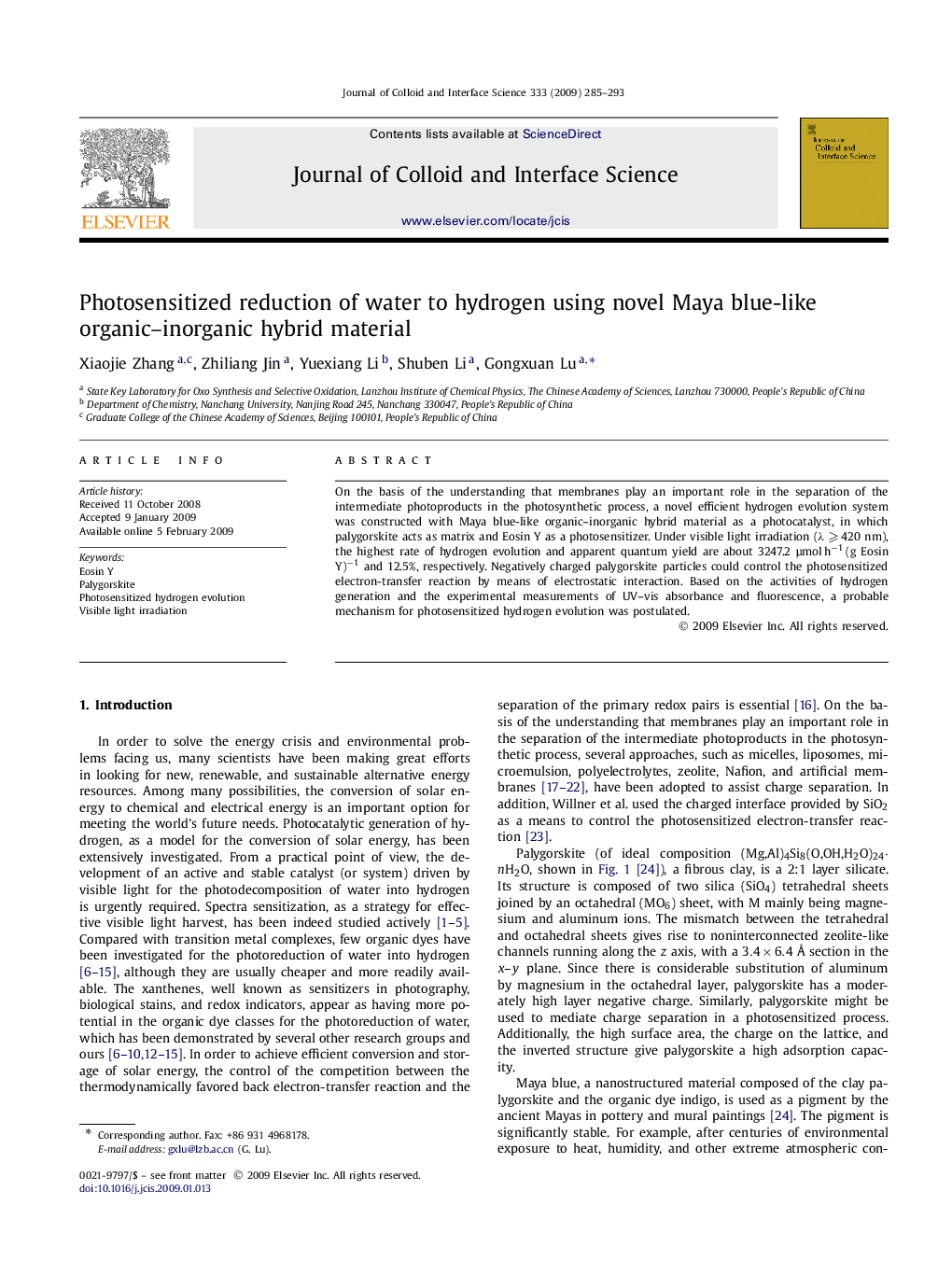| Article ID | Journal | Published Year | Pages | File Type |
|---|---|---|---|---|
| 610977 | Journal of Colloid and Interface Science | 2009 | 9 Pages |
On the basis of the understanding that membranes play an important role in the separation of the intermediate photoproducts in the photosynthetic process, a novel efficient hydrogen evolution system was constructed with Maya blue-like organic–inorganic hybrid material as a photocatalyst, in which palygorskite acts as matrix and Eosin Y as a photosensitizer. Under visible light irradiation (λ⩾420 nmλ⩾420 nm), the highest rate of hydrogen evolution and apparent quantum yield are about 3247.2 μmol h−1 (g Eosin Y)−1 and 12.5%, respectively. Negatively charged palygorskite particles could control the photosensitized electron-transfer reaction by means of electrostatic interaction. Based on the activities of hydrogen generation and the experimental measurements of UV–vis absorbance and fluorescence, a probable mechanism for photosensitized hydrogen evolution was postulated.
Graphical abstractA novel efficient hydrogen evolution system was constructed with Maya blue-like organic–inorganic hybrid material as a photocatalyst, in which palygorskite acts as matrix and Eosin Y as a photosensitizer.Figure optionsDownload full-size imageDownload as PowerPoint slide
